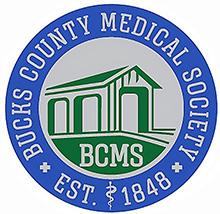

BCMSScript.
Newsletter of the Bucks County Medical Society Summer 2025
OUR MISSION
The Bucks County Medical Society strives to advance the professional and personal development of its physician members by providing educational and practice related resources as well as legislative advocacy. Moreover, the Bucks County Medical Society seeks to promote optimal outcomes for our patients as well as the public health of the Bucks County community.
EDITORIAL BOARD
Marilyn Heine, MD,
Editor in Chief
J. Matthew Bohning, MD
Hannah Do, MD
John Gallagher, MD
John Pagan, MD, MBA
President’s Message
President’s Message
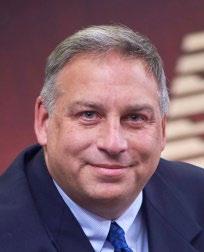
The
more things change . . .
Our Bucks County Medical Society annual meeting and brunch honored our colleagues with decades of medical service to our Bucks community and allowed us to connect with new and old friends. The lively discussions around the room and in the meeting about the challenges we mutually face in patient care remind us how our commonalities are much stronger than our differences.
The more things change . . .
I am honored to join the esteemed line of presidents of this great Medical Society, with roots tracing back to 1848—the same year our Pennsylvania Medical Society was founded. Some of the numerous challenges facing our profession and the uneven playing field we navigate have returned over the past 25 years when I first started in private surgical practice in Sellersville. I’ve dedicated my career to amplifying our collective voice through this Society, advocating for both our profession and our patients in various roles within the Pennsylvania Medical Society, proudly advancing our shared causes.
Our Bucks County Medical Society annual meeting and brunch with decades of medical service to our Bucks community and new and old friends. The lively discussions around the room and challenges we mutually face in patient care remind us how our stronger than our differences.
Medicine and my career have changed a lot in that time, but common themes and common solutions persist. Fair valuation and payment for physician services, the scope of practice of lesser trained medical professions, the corporatization of medicine, and the additional medical legal challenges we face in caring for patients are issues that have plagued most of our careers to varying degrees. While our combined multipronged efforts yielded substantial tort reforms decades ago, liability venue shopping is re-emerging as a silent threat facing medical practice in southeast Pennsylvania.
I am honored to join the esteemed line of presidents of this great roots tracing back to 1848—the same year our Pennsylvania Medical Some of the numerous challenges facing our profession and the navigate have returned over the past 25 years when I first start in Sellersville. I’ve dedicated my career to amplifying our collective Society, advocating for both our profession and our patients in Pennsylvania Medical Society, proudly advancing our shared causes.
These professional medical challenges may appear difficult or even impossible, but together, we will find solutions again. With political awareness and participation, our unified community of physicians can advocate for our patients and the good care they deserve. I welcome your help as we work together for our patients, our practices, and our profession.
John J. Pagan, MD, MBA, FACS President, Bucks County Medical Society
Medicine and my career have changed a lot in that time, but common solutions persist. Fair valuation and payment for physician services, of lesser trained medical professions, the corporatization of medicine, medical legal challenges we face in caring for patients are issues our careers to varying degrees. While our combined multipronged
substantial tort reforms decades ago, liability venue shopping threat facing medical practice in southeast Pennsylvania.
Merging Melodies: Music and Medicine
Merging Melodies: Music and Medicine
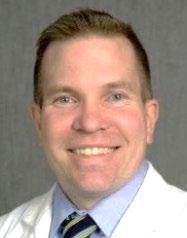
J. Matthew Bohning, MD, is a gastroenterologist at Penn Medicine
Doylestown Health in Central Bucks County. He is the immediate Past President of the Bucks County Medical Society and Principal Trombone of the Bucks County Symphony Orchestra.
may involve the ability to not order tests if they won’t change outcomes and awareness of family dynamics, social, and cultural considerations.
J. Matthew Bohning, MD, is a gastroenterologist at Penn Medicine Doylestown Health in Central Bucks County. He is the immediate Past President of the Bucks County Medical Society and Principal Trombone of the Bucks County Symphony Orchestra.
In music, being artistic and creative enables us to comprehend how music can profoundly impact us and illicit emotional responses. Performing music also requires an incredible amount of logic and critical thinking. When an exceptional professional musician plays the middle note that gives a major chord “color” or mood, that note has to be played slightly softer and lower (flat) to amplify the chord’s harmonics and ring. This requires listening and absorbing vast amounts of data in real time to have a perfect sound.
I have been blessed to have two true passions that complement each other and the opportunity to explore both. While music and medicine seem to be distinct, both require tremendous knowledge, time, practice and technical skill to achieve a high level. They are a lot more similar than most people think. knowledge, time, practice and technical skill to achieve a high level. They are a lot than most people think.
Music has always been my first passion, since as early as I can remember. I recall being 5, hearing things my older brother was practicing and then figuring them out on the piano. passion carried me through undergraduate and graduate school, where I earned my Master’s Degree in Trombone Performance, and later enjoyed being a freelance musician in Philadelphia. During graduate school, however, I started to wonder if there was anything else I wanted for the rest of my life. After exploring a few options, I decided on medicine and wholeheartedly loved the journey of learning – from post-baccalaureate pre-med studies to medical school, residency and fellowship.
Music has always been my first passion, since as early as I can remember. I recall being age 4 or 5, hearing things my older brother was practicing and then figuring them out on the piano. That passion carried me through undergraduate and graduate school, where I earned my Master’s Degree in Trombone Performance, and later enjoyed being a freelance musician in Philadelphia. During graduate school, however, I started to wonder if there was anything else I wanted to do for the rest of my life. After exploring a few options, I decided on medicine and wholeheartedly loved the journey of learning – from post-baccalaureate pre-med studies to medical school, residency and fellowship. When I decided to make this change many friends and family were surprised: “Isn’t that a complete left turn, from music to medicine?” In fact, experiences over the years have shown me that there are actually many parallels between being a successful musician and physician. While many people picture physicians as more “left-brain” – logical , better at computations and criticalthinking skills; and musicians as more “right-brain” – creative , artistic and imaginative; to really excel in either field requires a combination and balance of both.
When I decided to make this change many friends and family were surprised: “ sn’t that complete left turn, from music to medicine?” over the years have shown me that there are actually many parallels between being a successful musician and physician. While many people picture physicians as more er at computations critical-thinking skills; and musicians as more , artistic and imaginati to really excel in either field requires a combination and balance of both.
For physicians, the “left brain” features include vast amounts of knowledge and skills, quickly integrating and interpreti data to execute a plan of care patients. But a great physician who has mastered the listen patient, empathize, and understand other influence how care for them. While physicians are good at ordering tests and procedures to help diagnose treat, sometimes what a patient needs most gentle words of reassurance from someone who has truly listened to them. “Right brain” functions that shape how we can be better physicians for our patients may involve the order tests if they won’t change outcomes and awareness of family dynamics, .
For physicians, the “left brain” features include learning and mastery of vast amounts of knowledge and skills, quickly integrating and interpreting data to execute a plan of care for patients. But a great physician who has mastered the “art of medicine” is able to listen to the patient, empathize, and understand other factors affecting the person that influence how to care for them. While physicians are good at ordering tests and procedures to help diagnose and treat, sometimes what a patient needs most are gentle words of reassurance from someone who has truly listened to them. “Right brain” functions that shape how we can be better physicians for our patients
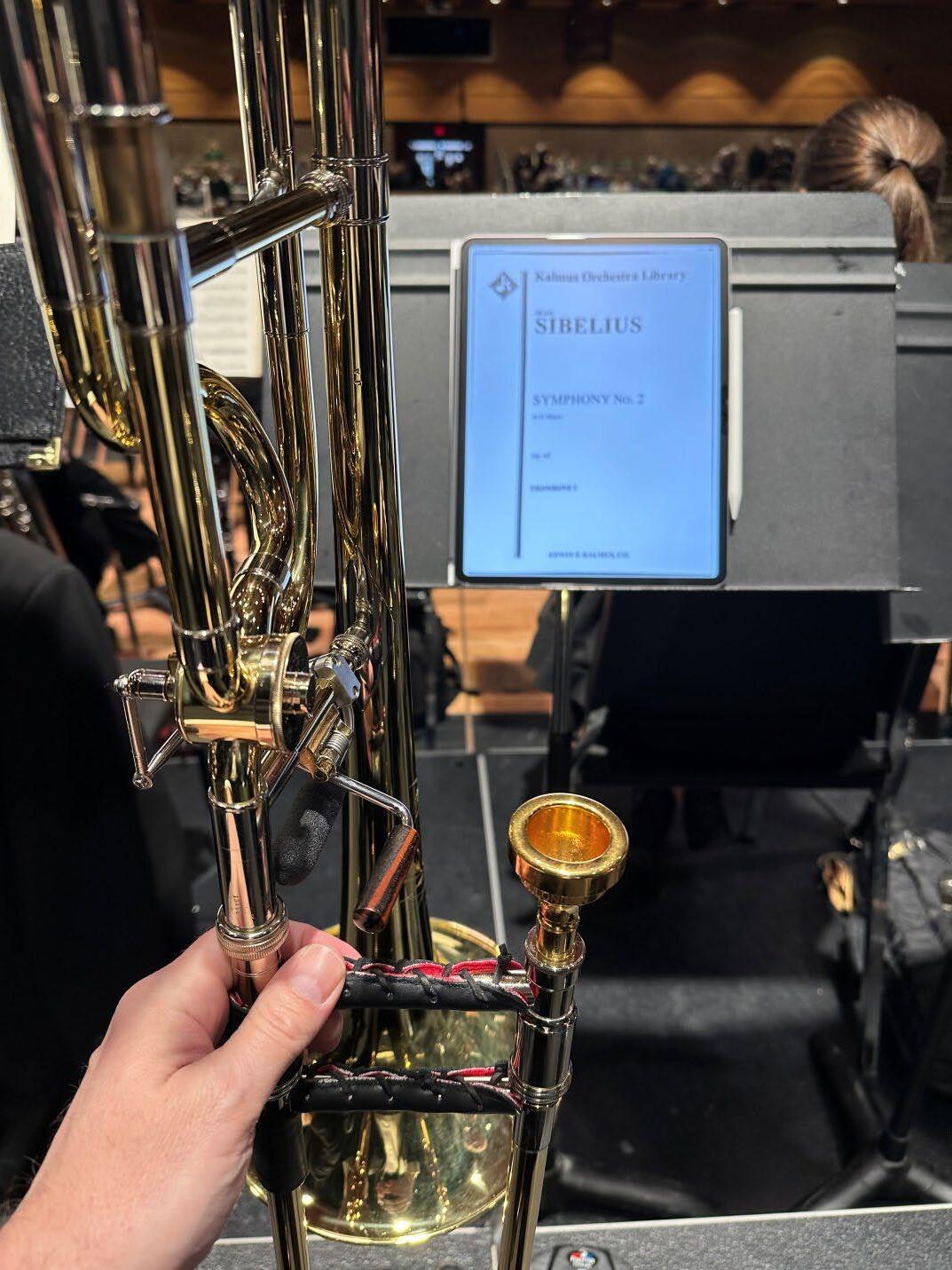
In music, being artistic and creative enables us to comprehend how music can profound impact us and illicit emotional responses. Performing music also requires an incredible of logic and critical thinking. When an exceptional professional musician plays the middle
Advocating and Advancing Endocrinology at the Community Level
Advocating and Advancing Endocrinology at the Community Level
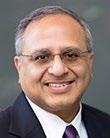
Arvind Cavale, MD, FACE, FCPP, PCEO, is an endocrinologist and principal investigator for clinical trials in Lower Bucks County.
Arvind Cavale, MD, FACE, FCPP, PCEO is an endocrinologist and principal investigator for clinical trials in Lower Bucks County.
BCMSScript connected with Dr. Cavale for an update on hot topics in endocrinology.
BCMSScript connected with Dr. Cavale for an update on hot topics in endocrinology.
contracting arrangements with a national lab via a “Client Bill” option to get tests at 85-90% discount. This continues to help us obtain labs at affordable prices that Medicare does not cover. Similarly, our staff has an ongoing list with links to Patient Assistance Programs offered by almost all major pharmaceutical companies.
BCMSScript: Turning to clinical innovations and improvements, where do you see the role of GLP-1 receptor agonists in the care of diabetes, weightloss, and other benefits? What precautions are most important?
The challenges faced by endocrinology practices and patients, while significant, also present opportunities for advocacy, innovation, and improvement. Advocacy is an essential effort to rejuvenate and sustain the practice of endocrinology and for patient empowerment. Advocating at a local add to the joy of practice, irrespective of whether one is employed or independent.
The challenges faced by endocrinology practices and patients, while significant, also present opportunities for advocacy, innovation, and improvement. Advocacy is an essential effort to rejuvenate and sustain the practice of endocrinology and for patient empowerment. Advocating at a local level can add to the joy of practice, irrespective of whether one is employed or independent.
BCMSScript: How has your advocacy impacted the practice of endocrinology?
BCMSScript: How has your advocacy impacted the practice of endocrinology?
In 2016 and 2017, we took legal action via the Courts of Administrative Law Judges, to obtain personal Continuous Glucose Monitoring supplies for our patient with Type 1 Diabetes Mellitus (T1DM) who was entering Medicare, which subsequently led to a formal coverage policy in 2017. We collaborated with several endocrinologists across the country, chief among them being Nicholas Argento, MD. These victories would not have been possible without the patient’s family, a community advocate, and open collaboration between endocrinology practices. This change in the Medicare coverage rule has helped us realize our longstanding goal of transforming diabetes care into a continuous process, reducing the time to target hemoglobin A1c by half, and saving Medicare $7695 per member for diabetes care in 2022.
GLP-1 receptor agonists have been in use for diabetes management for about 15 years. Recently dual agonists for the GLP-1 and GIP receptors have shown promise and triple agonists for the GLP-1, GIP and Glucagon receptors are being developed. Over the years, these compounds have been shown to not only improve glucose control but also improve lipid profile, reduce weight, reduce cardiovascular events, improve renal function and improve hepatic steatosis. Therefore, these agents have a significant role in cardiometabolic and hepato-renal disorders. Lately, tirzepatide has also been approved to reduce the severity of obstructive sleep apnea. Some of these drugs are also being studied to reduce opioid and alcohol addiction. Additionally, tirzepatide has also been demonstrated to prevent onset of type 2 diabetes in people with prediabetes.
In 2016 and 2017, we took legal action via the Courts of Administrative Law Judges, to obtain personal Continuous Glucose Monitoring supplies for our patient with Type 1 Diabetes Mellitus (T1DM) who entering Medicare, which subsequently led to a formal coverage policy in 2017. We collaborated several endocrinologists across the country, chief among them being Nicholas Argento, MD. These victories would not have been possible without the patient’s family, a community advocate, and collaboration between endocrinology practices. This change in the Medicare coverage rule has helped realize our longstanding goal of transforming diabetes care into a continuous process, reducing to target hemoglobin A1c by half, and saving Medicare $7695 per member for diabetes care in 2022.
At every opportunity, we must try to engage our patients with local elected officials. In 2015, we organized a “Discuss Healthcare with your Representative” meeting at our local public library to highlight potential benefits and risks of legislation addressing Medicare physician payment (MACRA). Since the recession of 2007, when many patients lost jobs and insurance, we developed direct contracting arrangements with a national lab via a “Client Bill” option to get tests at 85-90% discount. This continues to help us obtain labs at affordable prices that Medicare does not cover. Similarly, staff has an ongoing list with links to Patient Assistance Programs offered by almost all major pharmaceutical companies.
At every opportunity, we must try to engage our patients with local elected officials. In 2015, we organized a “Discuss Healthcare with your Representative” meeting at our local public library to highlight potential benefits and risks of legislation addressing Medicare physician payment (MACRA).
Since the recession of 2007, when many patients lost jobs and insurance, we developed direct
Having said all this, I have to emphasize that these drugs can cause adverse effects like stomach fullness, flatulence, belching, nausea, vomiting and constipation. They also cause delayed gastric emptying, which is important for people undergoing general anesthesia for procedures. Precautions that are needed when prescribing such medications include appropriate patient selection, adequate discussion of pros and cons and potential side effects, detailed dietary instructions and intermediate and long term goals and strategy. The bottom line is that these medications must be deployed by a physician with experience in managing such diseases and medications, and managed by a physician-led team supporting the patient along the way.
BCMSScript: Turning to clinical innovations and improvements, where do you see the role of receptor agonists in the care of diabetes, weight-loss, and other benefits? What precautions are important?
GLP-1 receptor agonists have been in use for diabetes management for about 15 years. Recently agonists for the GLP-1 and GIP receptors have shown promise and triple agonists for the GLP-1,
BCMSScript: What advances are there in continuous glucose monitoring?
Continuous glucose monitoring (CGM) is one of the revolutionary technological tools of our time. In our practice, we have deployed and used CGM on a limited basis for almost 20 years. But technical advances over the past 7-8 years have made this a powerful tool for self-use by patients. It is also useful for patient education, lifestyle modification and remote monitoring. All of this has dramatically improved our ability to deliver care to patients wherever they are and convert diabetes care from an episodic to a continuous care process. Combining CGM use, remote patient monitoring/coaching and telemedicine, we have totally changed how diabetes is managed, and significantly reduced the burden of diabetes on patients, family, and community.
Leveraging technology can facilitate virtual or in-person medicine, remote patient monitoring, chronic care management, patient education, and communications, thus enhancing practice efficiency and patient engagement. EHRs can be utilized to track patient outcomes and identify areas for improvement.
BCMSScript: Is there a role for triiodothyronine/ thyroxine therapy for patients with hypothyroidism not optimally treated with levothyroxine?
Conventionally, there is little evidence-based role for the addition of triiodothyronine to levothyroxine therapy, except in patients with profound hypothyroidism (usually a shortterm use). To understand whether there is a safe and effective way to use Armour Thyroid (dessicated thyroid extract containing a fixeddose combination of T4 and T3) in place of levothyroxine as thyroid hormone replacement, we are conducting a clinical trial (Avanti) at our research center.
BCMSScript: Are strides being made in preserving beta-cell function in patients with type 1 diabetes?
In people 8 years of age or older, who have pancreatic beta cell autoimmunity and preclinical (stage 2) disease but have not developed overt diabetes, a monoclonal antibody, teplizumab, has been shown to delay the onset of clinical type 1 diabetes (stage 3). This is currently available for therapy.
BCMSScript: Are there other emerging therapies in endocrinology that you would like to highlight? There has been approval of palopegteriparatide, a PTH analog for treatment of hypoparathyroidism in place of conventional calcium + activated vitamin D. A once-weekly basal insulin efsitora alfa, demonstrated clinical efficacy similar to insulin glargine, in patients with type 2 diabetes starting insulin for the first time, in a recent phase 3 study conducted at our facility. VX-880, an investigational allogeneic stem cell-derived, fully differentiated, insulin-producing islet cell therapy, is being evaluated for patients who have T1DM with impaired hypoglycemic awareness and severe hypoglycemia, to be given as an infusion into the hepatic portal vein. VX-264, an investigational approach encapsulating cells in a protective device to be surgically implanted, is being evaluated without the use of immunosuppressive therapy as the devices are designed to shield the cells from the body’s immune system.
Bucks County Medical Society celebrates unity with our community partners.

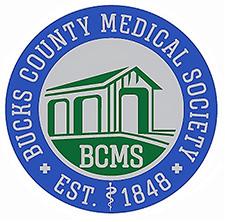
Bucks County Medical Society is proud to be a founding member of the Bucks County Health Improvement Partnership.
An Ophthalmologist’s Observations
Retrospective: An Ophthalmologist’s Observations
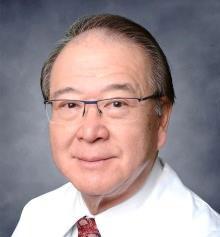
David S. C. Pao, MD, is an ophthalmologist who practiced in Lower Bucks County. He is a former president of Bucks CMS and the Pennsylvania Academy of Ophthalmology.
BCMSScript interviewed Dr. Pao for a retrospective on his career.
BCMSScript interviewed Dr. Pao for a retrospective on his career.
BCMSScript: Tell us about your career path.
proud of two instruments that have been used continuously for over 40 years: the bipolar cautery to seal microscopic vessels and capillaries with minimal damage to surrounding tissues in eye surgery; and for electro retinal physiology, the electroretinogram-visual evoked response (ERGVER) that measures electrical responses from the rod and cone cells of the retina, and their stimulation on the occipital cortex in the brain.
David S. C. Pao, MD, is an ophthalmologist who practiced in Lower Bucks County. He is a former president of Bucks CMS and the Pennsylvania Academy of Ophthalmology.
After receiving my B.S. in electrical engineering from Swarthmore College, I was graduated with an M.D. from Columbia University College of Physicians and Surgeons and then completed my ophthalmology residency and retina fellowship at Thomas Jefferson University Hospital and Wills Eye Hospital.
BCMSScript: Tell us about your extensive experience in advocacy.
BCMSScript: Tell us about your career path.
After receiving my B.S. in electrical engineering from Swarthmore College, I was graduated from Columbia University College of Physicians and Surgeons and then completed my ophthalmology residency and retina fellowship at Thomas Jefferson University Hospital and Wills Eye Hospital.
After I completed my U.S. Army obligation I was in private practice in Bucks County from 1976 until my retirement in 2016. Since then, I provide weekly ophthalmology services at the Veterans Community Clinic in Horsham. I chose to go into ophthalmology as I was curious about my own myopia. I have had a fulfilling career and feel that I influenced one daughter to become an ophthalmologist and another to be an optometrist.
I have always been a member of our local, state, and national societies to support our profession and our patients. I became more involved after the passing of the Balance Budget Act of 1997 as I needed to investigate how Congress could be so misinformed to base Medicare payment on gross domestic product and not the health of our patients. Physician advocacy is important for protection of our profession and our patients. Issues I have worked on include liability reform, scope of practice, patient protection, and physician payment; at the state and national levels.
After I fulfilled my U.S. Army obligation I was in private practice in Bucks County from 1976 until retirement in 2016. Since then, I provide weekly ophthalmology services at the Veterans Community Clinic in Horsham. I chose to go into ophthalmology as I was curious about my own myopia. I have had a fulfilling career.
BCMSScript: What are 3 changes in the practice of medicine that you have observed ?
BCMSScript: What are 3 changes in the practice of medicine that you have observed?
BCMSScript: You have been a president of Bucks CMS and your state specialty society and are a member of PAMED, the AMA, and your national specialty society. Why are membership and leadership in organized medicine important?
I have seen the huge impact of translational medicine, with advancements combining technology clinical, and research. I’ve observed the detrimental burdensome intrusion of government and insurers into the practice of medicine. Thirdly, when I started practice 80% of physicians were private practice and 20% were employed. Now it is the reverse where many medical practices run as a less personal business.
I have seen the huge impact of translational medicine, with advancements combining technology, clinical, and research. I’ve observed the detrimental burdensome intrusion of government and insurers into the practice of medicine. Thirdly, when I started practice 80% of physicians were in private practice and 20% were employed. Now it is the reverse. Many medical practices are run as a less personal business or corporate practice.
With membership, you develop leaders and share knowledge and ideas. A single individual cannot do it alone, but colleagues working together for the shared goal of patient safety are absolutely necessary to effect changes in our profession and medical society.
BCMSScript: Is there additional advice that you would like to share?
BCMSScript: Please describe innovations you have developed .
BCMSScript: Please describe innovations you have developed.
I have been involved in developing numerous instruments for ophthalmology without heavy research but to address a need utilizing simple engineering principles that I learned as an undergraduate. I hold six patents and I am
Get involved with membership in your county, state, and national societies. If you really want to get valuable experiences, consider running for elective office. I ran for alternate delegate to the national presidential convention and was elected. These meetings are invaluable as the legislators get to know you. Or you may get the civic duty “bug” and run for a local or national office.
I have been involved in developing numerous instruments for ophthalmology without heavy research but to address a need utilizing simple engineering principles that I learned as an undergraduate. I hold six patents and I am proud of two instruments that have been used continuously for over 40 years: the bipolar cautery to seal microscopic vessels and capillaries with minimal damage to surrounding tissues in eye surgery; and for electro retinal physiology, the electroretinogram-visual evoked response (ERG-VER) that measures electrical responses from rod and cone cells of the retina, and their stimulation on the occipital cortex in the brain.
BCMSScript: Tell us about your experience in advocacy.
Training about Healthcare in Bucks County Technical Schools
Bucks County is home to three technical schools, each serving a different part of the county. Students at these schools who are interested in health-related fields can obtain exposure in a hospital or medical office setting through shadowing or occupational instruction with cooperative education.
BCMSSCript sat down with Steve Guinan, WorkBased Education Coordinator for the Middle Bucks Institute of Technology (MBIT) to learn more.
BCMSSCript: The MBIT website indicates that students in the medical and health professions program are being prepared for careers in the medical and allied health fields. The core curriculum includes an introduction to healthcare, professionalism, infection control, anatomy and physiology, medical terminology, communication, personal and environmental safety, emergency and disaster preparedness, ethical and legal responsibilities, nutrition, human growth and development; with additional instruction in clinical skills moving, lifting, and positioning of patients; vital signs; and standard precautions. Which students are eligible to enroll in MBIT programs?
SG: Students in the 10th, 11th, and 12th grade from our sending school districts can enroll at MBIT.
BCMSSCript: What healthcare-related programs do you offer?
SG: We offer three healthcare-related programs: medical and health professions, sports therapy and exercise management, dental occupations.
BCMSSCript: When are students potentially able to provide clinical services and how is the decision made that a student is ready?
SG: Some of the services that our students are trained in are assessing activities of daily living, taking vital signs, transfers, repositioning, mouth care, documentation, catheter care, and measuring urinary output.
BCMSSCript: How much supervision do the students receive when they are in a clinical setting, and who provides the supervision?
SG: When students are offered internships or occupational instruction with cooperative education (COOP), the place of work is required to provide supervision and mentorship.
BCMSSCript: In the event of an alleged adverse event related to an MBIT student in the office setting, who provides liability coverage?
SG: The place of business is legally required to provide liability coverage. However, if the student in job shadowing for a day or two the place of business does not have to have them covered.
BCMSSCript: Is there other information that you would like to share?
SG: Work-Based Education connects classroom learning with work-based experience and teams including employers, educators, community leaders, students, and parents.
SG: Work-Based Education connects classroom learning with work-based experience and teams including employers, educators, community leaders, students, and parents.
If a medical practice is considering “hosting” a student for cooperative education, there are federal and state laws and regulations.
SG: Typically, students in their second and third year can provide clinical services, when the student exemplifies that they have met the required curriculum requirements.
BCMSSCript: Which services can students provide in the clinical setting?
If a medical practice is considering “hosting” a student for cooperative education, there are federal and state laws and regulations
Once completing the healthcare training program, students may seek employment as medical assistants or patient care technicians in the community, addressing a potential workforce need for practices in the area.
Once completing the healthcare training program, students may seek employment as medical assistants or patient care technicians in the community, addressing a potential workforce need for practices in the area.
Bucks County’s 3 Career Technical Schools and their Sending School Districts
Upper Bucks County Technical School (UBIT)
Palisades, Pennridge, and Quakertown
Middle Bucks Institute of Technology (MBIT)
Centennial, Central Bucks, Council Rock, New Hope/Solebury
Bucks County Technical High School (BCTHS)
Yardley, Tullytown, Morrisville, Falls, Bensalem, Bristol, Lower Makefield
Bucks CMS Donald E. Parlee, MD, Memorial Scholarship
2025-2026 Academic Year Award
Lawmakers impact our practice of medicine. Make sure your voice is strong: Join PAMPAC.
The
Bucks CMS Scholarship Fund
One $1,750 scholarship will be awarded Applications are accepted July 1 - September 30
2022, we began the process to establish a scholarship to deserving medical students from Bucks County.
learn more and consider making a nation to help the future generation, please visit: https://www.foundationpamedsoc.org/DonateToBucksScholarship
Physicians’ Voice in Politics
Bucks CMS Scholarship Fund
Bucks CMS Scholarship Fund
In 2022, we began the process to establish a scholarship to help deserving medical students from Bucks County.
The Foundation of the Pennsylvania Medical Society is pleased to administer the Bucks CMS Donald E. Parlee, MD, Memorial Scholarship for a medical student who resides in Bucks County. This scholarship is made possible by contributions from the Bucks County Medical Society which established the fund within The Foundation to assist local students with the cost of attending a U.S. medical school.
In 2022, we began the process to establish a scholarship to help deserving medical students from Bucks County.
In 2022, we began the process to establish a scholarship to help deserving medical students from Bucks County.
To learn more and consider making a donation to help the future generation, please visit: https://www.foundationpamedsoc.org/DonateToBucksScholarship
To learn more and consider making a donation to help the future generation, please visit:
To learn more and consider making a donation to help the future generation, please visit: https://www.foundationpamedsoc.org/DonateToBucksScholarship https://www.foundationpamedsoc.org/DonateToBucksScholarship
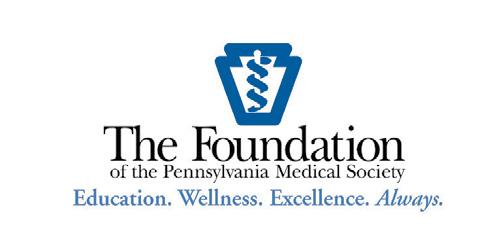
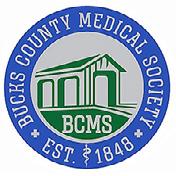

www.PAMPAC.org

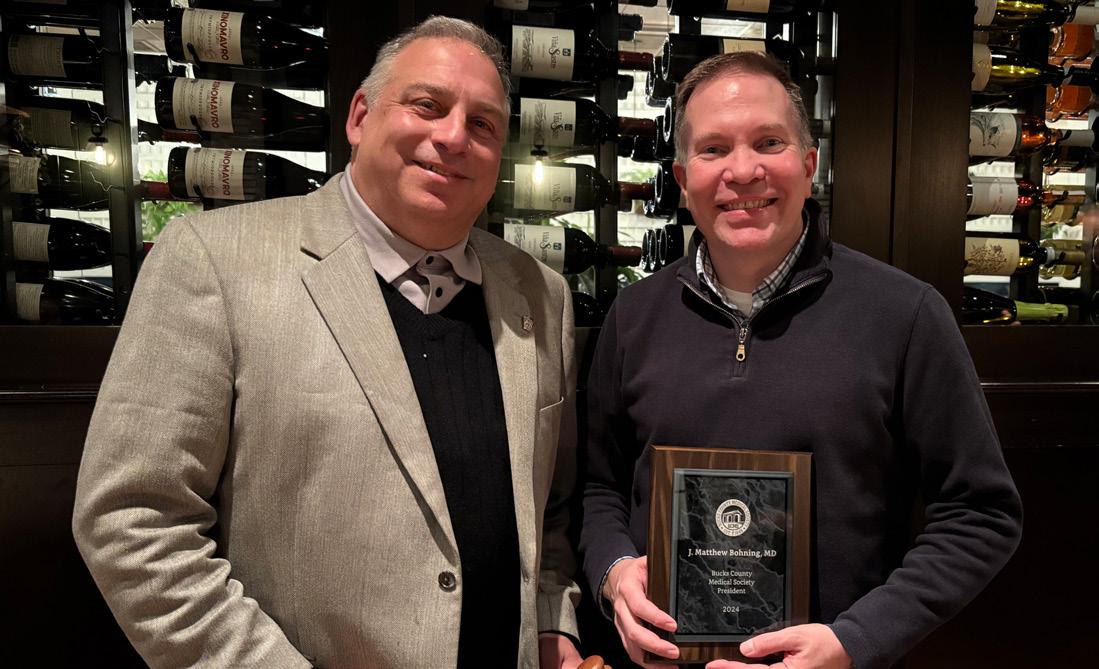
In January, Bucks CMS thanked Dr. Bohning for his service as our 2024 president as Dr. Pagan was installed as our 2025 president.
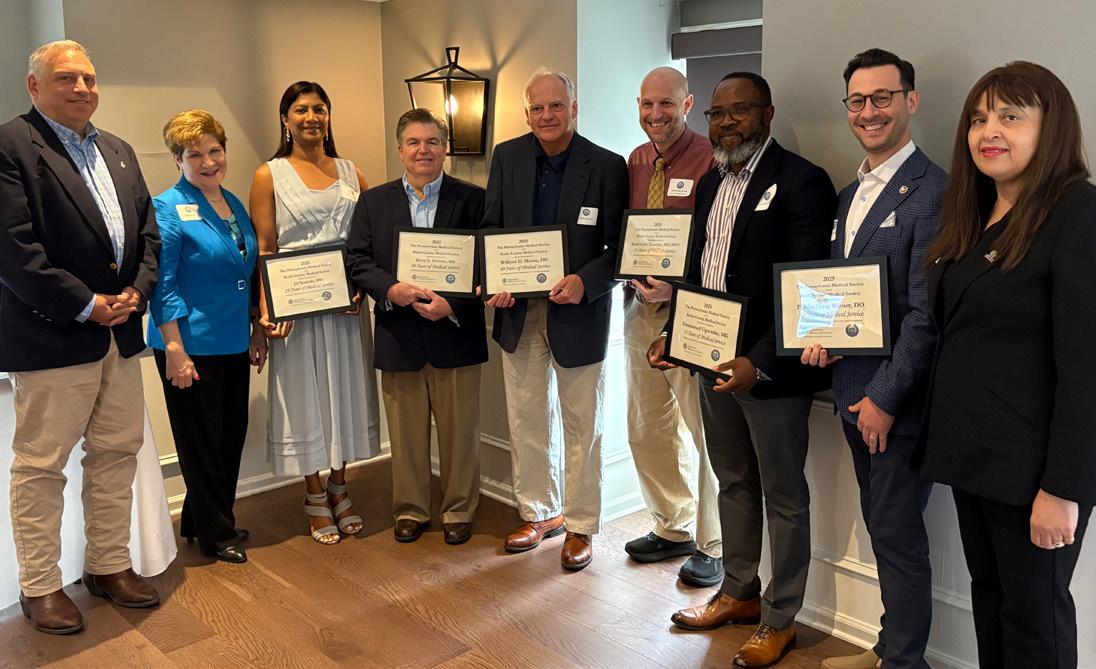
At the Board CMS Annual Meeting and Brunch, members who provided decades of service were recognized.
JOIN PAMPAC HERE:
Pennsylvania Medical Political Action Committee
Bucks CMS Presidential Installation and Board Meeting in January 2025
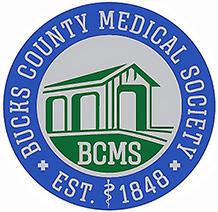
400 Winding Creek Blvd.
Mechanicsburg, PA 17050-1885
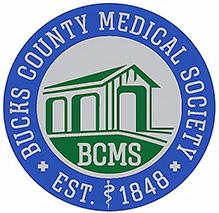
• The Bucks County Medical Society Board meets bimonthly. Bucks CMS members are welcome to attend Board meetings. For details, please contact buckscms@ pamedsoc.org
• SAVE THE DATE October 9, 2025 Legislative Reception Location TBD


We thank you for your membership and welcome you to contact us anytime at buckscms@pamedsoc.org
